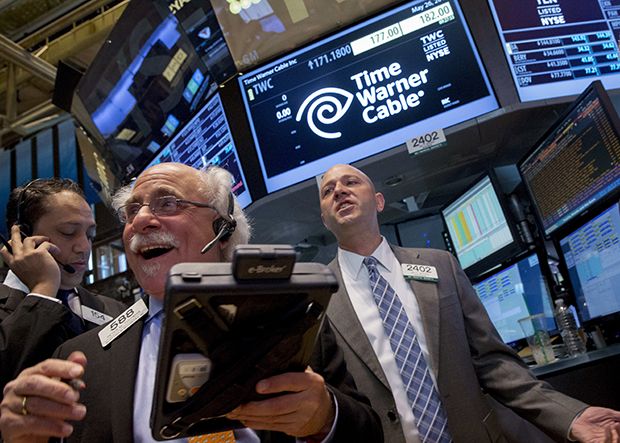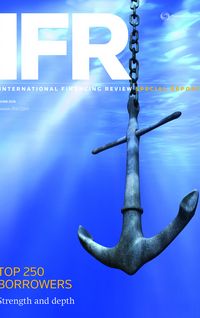In its quest to become the second largest cable provider in the United States by taking over larger Time Warner Cable, Charter Communications faced an uphill battle.
Charter Communications’ first attempt to take over Time Warner Cable through a hostile bid in early 2014 was thwarted by a takeover offer from rival Comcast – the top player in the industry.
Regulatory concerns ultimately forced Comcast to walk away from the deal, paving the way for a second shot from Charter, which, in May of 2015, finally reached an agreement to take over TWC for US$78.7bn, including debt and smaller competitor Bright House Networks for US$10.4bn.
Financed with a mix of cash and stock, that merger came with a much more expensive price tag than Charter’s first offer, forcing the company to shop around for north of US$30bn of financing.
Knowing that market conditions might be volatile, junk-rated Charter bought itself some flexibility by obtaining commitments from banks for over 18 months as it waited for the right opportunity to access the market with a mix of bonds and loans.
“They were able to put themselves in a position where they were never a forced issuer,” said one banker who has worked with the company. “It was an unusually long commitment.”
The linchpin of the bond and loan package was a US$15.5bn investment-grade bond offering the company completed in July, shortly before a spike in volatility caused credit spreads to start widening sharply.
The six-part offering, which included maturities ranging from five to 40 years, was secured against the company’s operating assets, allowing Charter to obtain investment-grade ratings from two of the main agencies.
“Charter was very smart in the initial structuring of the deal,” said the banker. “They figured out how much secured leverage they could put on to get the investment-grade rating and gave investors comfort that it was a priority for them to keep that rating.”
The buyside gave the deal an overwhelming reception, with US$48.5bn in orders piling in for the Goldman Sachs-led offering, on which Charter ended up paying new issue concessions of between 5bp and 35bp across its curve.
With concerns over the Greek debt crisis and the valuation of Chinese equities keeping many issuers at bay at that time, Charter’s ability to clear US$15.5bn through a market it had never tapped before was nothing short of remarkable.
More importantly, the deal allowed the company to immediately de-risk a large chunk of the financing, helping build momentum for a US$3.8bn term loan that followed a couple of weeks later via Bank of America Merrill Lynch.
Finding the right window to pull the trigger on the unsecured high-yield bond that was also part of the financing, however, proved trickier, as a pick-up in volatility caused credit spreads to back up to their widest in nearly three years by the beginning of October.
Taking advantage of a short bounce-back, Charter eventually pulled the trigger on a US$2.5bn junk bond in early November, seizing on what appeared to be one of the last available issuance windows before a potential rake hike from the Federal Reserve, which materialised the following month.
As one of the most liked credits in the high-yield space, Charter had no trouble attracting buyers and priced its new 10.25-year unsecured issue, led by Credit Suisse, at a final yield of 5.75%.
At the time, Ken Monaghan, head of high-yield at Amundi Smith Breeden, described the financing as a model transaction.
“Charter did not overwhelm the appetite of any pocket of capital and didn’t pay a large transaction premium to get the deal across the finish line,” he told IFR.
The window for issuance closed only a few weeks later, after a multi-billion financing backing the takeover of data storage firm Veritas from Carlyle – the largest buyout of the year – failed to clear the market and oil prices took another major leg down.
Even in the midst of the ensuing sell-off in early February, however, Charter gave the sputtering US junk-bond sector a welcome boost by opportunistically tapping the market with a US$1.7bn eight-year non-call three junk-rated issue that was mostly driven by reverse enquiries from investors.
At a time when many lower rated potential borrowers had been locked out of the market, Charter demonstrated that the buyside was still keen to get exposure to higher quality paper.
The deal, which priced at a yield of 5.875% and was led by Deutsche Bank, offered just 12.5bp of new issue premium over the company’s existing notes.
In what some described as a smart insurance policy against further volatility, Charter opted to keep proceeds from that offering on its balance sheet.
That way, the funds could be used either to pay Time Warner Cable shareholders if they elected to receive a higher proportion of the purchase price in cash rather than stock, or to retire expensive debt that would soon become callable.
TWC shareholders overwhelmingly opted to receive a higher proportion of the purchase price in stock later in May.
Among the high-coupon notes Charter was hoping to retire were the 7% 2019s and 7.375% 2020s, which the company also targeted in early April with another refinancing deal – a US$1.2bn high-yield bond launched via Bank of America Merrill Lynch.
That note, which matures in 2025, priced at a yield of just 5.50% and was tapped later that month for an additional US$300m.
Charter’s strategy of using a mix of loans, secured investment-grade bonds and unsecured high-yield notes was replicated by Dell for its acquisition of EMC. (See separate article for details on Dell’s funding activities.)
To see the digital version of this special report, please click here
To purchase printed copies or a PDF of this report, please email gloria.balbastro@thomsonreuters.com




